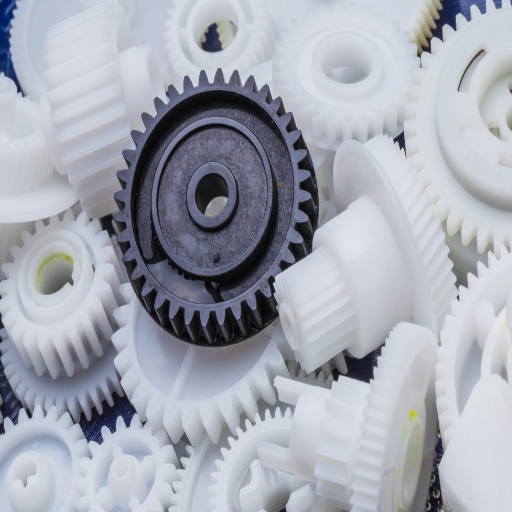Material selection is crucial among engineering and design decisions, particularly when precision machining of components is concerned. Out of many choices available, an acetal homopolymer resin known as Delrin stands out for its versatility, strength, and resilience. Yet, within the Delrin family, especially Delrin 100 and 150, the decision places those seeking an actual cost and performance balance into a dilemmatic situation. This article will primarily focus on the differences between these two materials, examine the properties they offer, and provide the necessary knowledge to make an informed decision. Your choice between Delrin 100 and 150 will serve you better if you prioritize durability, machinability, or a general application.
Introduction to Delrin and Acetal
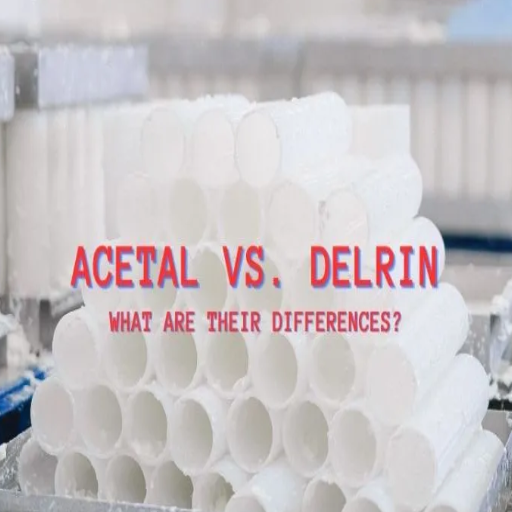
What Is Delrin and Use Applications?
Delrin is a registered trademark for an acetal homopolymer developed by DuPont. This engineering thermoplastic offers things such as strength and rigidity that can sustain the formulation of an entire industrial process under varying environmental situations. Delrin belongs to the polyoxymethylene (POM) category of plastics, primarily due to its notable mechanical properties, including good wear resistance, low friction coefficients, excellent moisture resistance, and chemical resistance. These Berkeley paint features make polymide for demanding applications, especially applications involving precision and mechanical integrity.
Delrin is most heavily recruited for processes involving the building of automotive, aerospace, electronics, and industrial machinery applications. For example, in the automotive application, Delrin is used to make gears, bearings, and fuel system components, as well as fasteners, because it can withstand wear and high temperatures while still exhibiting dimensional stability. In the application of electronics, Delrin parts are used to make insulators and connectors that are both lightweight and durable. It also finds considerable use in consumer articles, such as zippers, sporting goods, and musical instruments, due to the balance it strikes between toughness and machinability. The versatility and performance of Delrin have earned it an appreciative following from engineers and designers seeking to optimize efficiency and longevity in their products.
For a better understanding of Acetal and Acetal Copolymer
Acetal and acetal copolymers are thermoplastic materials highly valued worldwide for their exceptional mechanical strength, rigidity, and abrasion resistance. The acetal, often referred to as polyoxymethylene (POM), is a polymer known for its high dimensional stability and low friction, making it ideal for precision parts that require tight tolerances. Acetal copolymer, on the other hand, is a type of acetal that is polymerized with comonomers to reduce the susceptibility of the material to porosity while enhancing its thermal stability.
Both materials are industrially brought into frequent use, id est, because of their properties. Acetal, for instance, is used in automotive engineering, such as in fuel system components, door handles, and seatbelt mechanisms, because it can withstand severe operating conditions while showing negligible wear, deformation, or tear. These materials also exhibit good chemical resistance, particularly against hydrocarbons, solvents, and weak acids, making them suitable for use in environments where such incidents are common.
Material studies also indicate that acetal copolymers exhibit superior creep resistance compared to homopolymer acetals under sustained loads, thereby favoring their use in high-load, long-duration applications, such as power transmission components. Its thermal performance, in general, can be considered rated from -40°F to 212°F (-40°C to 100°C), therefore guaranteeing performance across a wide range of temperatures.
With ever-faster strides being made in materials science and manufacturing techniques, further penetration of acetal and acetal copolymer is being gained into emerging fields such as sustainable design and additive manufacturing, where precision, quality, durability, and environmental resistance prevail as paramount. The versatility of these materials renders them invaluable resources where applications are focused on both performance and durability, with high efficiency.
Different salient features between Delrin and other plastics
Delrin, as a homopolymer acetal resin, surpasses many typical plastics in terms of its mechanical properties and dimensional stability, particularly in terms of wear and abrasion resistance. To put it simply, the primary advantage of Delrin is its high strength-to-weight ratio; therefore, it is a good choice for applications that require strength but are also weight-critical. This characteristic is particularly sought after in the automotive and aerospace industries, where it will actively contribute to optimizing performance and efficiency.
Another point of Great difference is how Delrin resists moisture, chemicals, and solvents. This makes it dysfunctional to maintain its performance in harsh and demanding environments. For instance, for some plastics, moisture absorption is followed by deformation in the material over time. Delrin, however, stands firm and stays in shape with accuracy, even in humid conditions or when exposed to aqueous solutions.
Additionally, the low friction coefficient of Delrin stands out. This property substantially reduces wear and ensures a long life in applications involving moving or sliding parts, such as gears, bearings, and conveyor systems. Other plastics, although durable, would require an additional lubricant to perform optimally, thereby increasing maintenance costs.
The outstanding resistance of Delrin to temperature change is also a prime factor in its favor. Many other plastics would degrade or start to warp upon exposure to high temperatures, but Delrin can withstand such temperatures without compromising its structural integrity. So it becomes an assured choice towards parts where one can expect fluctuation or extreme heat.
Now, on the machinability front: Delrin is superior to other alternatives. It is more straightforward to machine to precision while reducing material wastage and maintaining tight tolerances. This, when combined with its consistent performance characteristics, typically results in significant savings during production, especially with complex part designs.
Simply put, it is the above list of differences that makes Delrin a favorite material for all the highly demanding applications in which other plastics tend to fall short. Delrin is capable of providing high-performance solutions for a wide array of applications no matter if those applications require mechanical strength, environmental resistance, or low maintenance.
Properties of Delrin 100 and Delrin 150
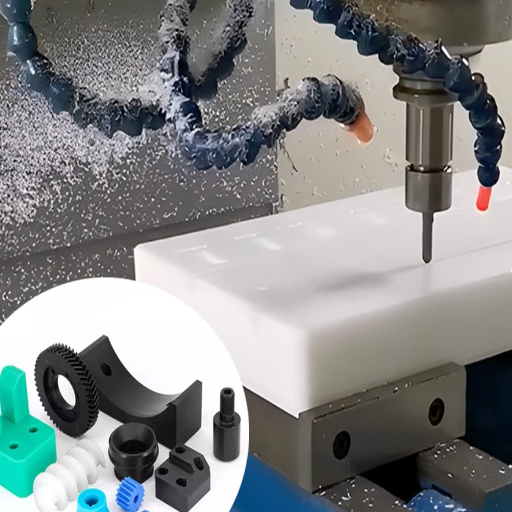
Mechanical Properties of Delrin 100
Delrin 100 holds an annal of high tensile strength and mechanical durability, making it the ideal choice for high-load capacity applications that require a degree of resilience. It offers a tensile strength of nearly 69 MPa (10,000 psi), which resists deformation when an object is subjected to heavy stress. This resin material exhibits an impressive impact strength; it also demonstrates good creep resistance in long-term use under stress. In precision component manufacturing, the modulus of elasticity value of about 3100 MPa (450,000 psi) gives Delrin 100 excellent rigidity, and its dimensional stability is paramount.
Better fatigue resistance is also exhibited by Delrin 100 when compared with many thermoplastics under conditions of cyclic loading. This makes it particularly suitable for applications involving repeated mechanical motions, such as gears, bearings, and springs. Another distinguished feature is that Delrin 100 can maintain its mechanical properties over a wide temperature range, with an uninterrupted use temperature of approximately 90°C (194°F), which may rise to somewhat higher temperatures for brief periods without losing strength.
Mechanical Properties of Delrin 150
Delrin 150 is a versatile acetal polyoxymethylene (POM) resin recognized for its exceptional mechanical strength and durability. It offers high stiffness in conjunction with dimensional stability, making it an ideal candidate for the most demanding applications. It has a tensile strength of approximately 9,700 psi (67 MPa), enabling it to resist deformation when placed under stress. Delrin 150 has a flexural modulus of 400,000 psi (2,758 MPa), affording a reasonable degree of rigidity under load. It also exhibits excellent fatigue resistance, enabling its use under cyclic loading conditions.
In other words, the material can maintain its mechanical properties when heated to 82°C (180°F) or upon brief rises to even hotter temperatures. Being low-friction offers natural lubrication, thus reducing wear in moving mechanisms such as bushings, gears, and sliding parts, and consequently augmenting the service life. Due to its density of 1.41 g/cm³ and its resistance to chemical agents and water absorption, Delrin 150 is favored for the manufacture of precision parts in the automotive, consumer goods, and electrical industries.
A Comparison of Delrin 100 and Delrin 150
Each type of acetal homopolymer offers excellent strength, stiffness, and dimensional stability; hence, both are versatile materials used extensively in various industrial environments. Apart from their similarities in molding and handling, they differ in areas that encompass performance behavior and ideal product applications, which will influence the price discussion for a particular project.
Mechanical Properties: Delrin 100 possesses slightly higher tensile strength and creep resistance than Delrin 150; therefore, it is preferred for applications requiring heavy mechanical stress or prolonged loading under intense mechanical stresses. However, Delrin 150 concentrates on its machinability and low warpage; hence, it finds more favor for complex, precision parts that require tight dimensional tolerances and ease of processing. Both materials are wear-resistant; however, the wear resistance properties of Delrin 100 are probably more suitable for highly loaded applications due to its stronger mechanical behavior.
Application Focus: When both materials span numerous industrial applications, Delrin 100 is generally used in more demanding environments, such as heavy-duty gears, industrial rollers, and conveyor components, due to its durability under harsh conditions. In contrast, Delrin 150 finds applications in more intricate designs, such as electrical housings, consumer product components, and automotive interior mechanisms, where ease of manufacturing is equally essential, as it offers better machinability and a more balanced set of properties.
Choosing between Delrin 100 and 150 should be mainly based upon the demands for mechanical performance, manufacturing processes, and end-use conditions of the application. Both grades bring all-around excellent performance, but their slight differences render one more amenable than the other for a given purpose.
Choosing the Right Delrin for Your Project
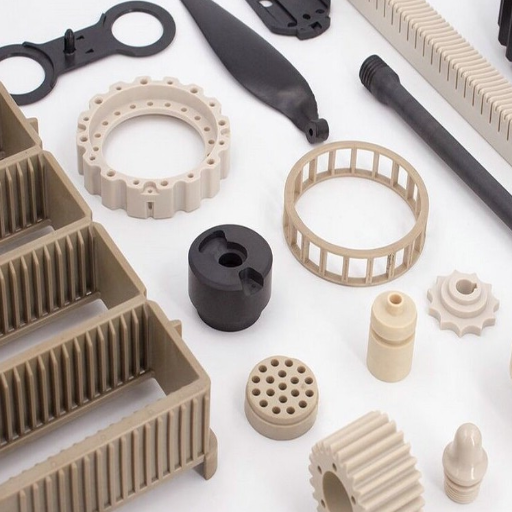
When to Use Delrin 100 vs 150
Choosing an appropriate Delrin for your project materials requires an understanding of the individual properties of the grades and how the particularities suit the requirements of your application. Delrin 100 is well regarded for its mechanical strength and stiffness; therefore, it is recommended for heavy engineering applications, such as gears, bearings, or any other structural component where high bearing load capacities are required. It has high tensile strength and impact resistance, ensuring performance reliability in demanding conditions, particularly in heavy industrial machinery and automotive applications.
On the contrary, the Delrin 150 option may offer better machinability, making it the usual choice for projects requiring more complicated designs or tighter tolerances. It’s just slightly lower in mechanical strength than Delrin 100, but this is compensated by the ease of machining, resulting in reduced manufacturing costs and shorter production cycles. Delrin 150 is generally used where electrical insulators, clips, and fasteners are required, and precision is essential, but such applications face only moderate mechanical demands.
Ultimately, project considerations such as mechanical loads, environment, and manufacturing conditions should play a decisive role in determining whether to choose Delrin 100 or Delrin 150. For cases that require maximum durability and resistance to wear, consider Delrin 100. For projects where design calls for great precision coupled with high-efficiency fabrication steps, Delrin 150 is a suitable option.
Typical Applications for Each Type of Delrin
Delrin 100 is well known for its durable properties and its resistance to wear, making it an excellent candidate for demanding circumstances, such as gears, bearings, or industrial components subjected to continuous friction. It may also be used in automotive components where strength and durability are crucial, such as timing gears, throttle components, and fuel system components. Furthermore, Delrin 100 is widely used in the manufacturing of mechanical devices and tools designed to function for an extended period under severe environmental conditions.
Conversely, Delrin 150 finds its perfect application in those requiring precision, with the added benefit of easier machining. Delrin 150 is recommended for use in medical device components, electronic housing, and precision instruments due to its enhanced dimensional stability. It is often employed in the manufacture of assembly fixtures, jigs, and fasteners where complex designs and tolerances are required. Additionally, Delrin 150 is well-suited for the production of prototypes or low-stress parts that require a fast turnaround without compromising quality.
From an analytical point of view, considering the unique mechanical properties and fabrication advantages, engineers can confidently select each Delrin grade to meet their project requirements, thereby providing optimal performance and efficiency.
CNC Machining with Delrin Materials
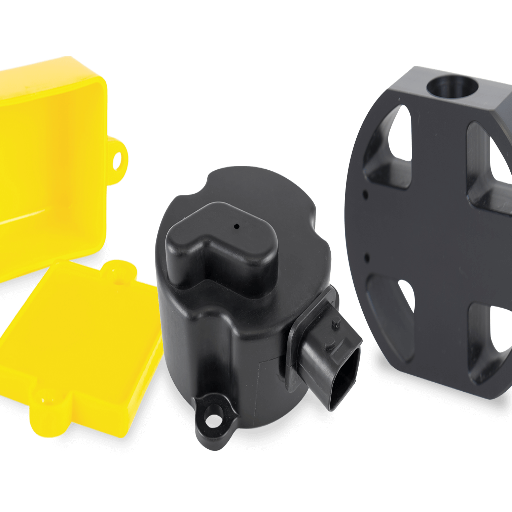
Best Practices for CNC Machining Delrin
Best practices ensure precision, efficiency, and excellent outcomes when working with Delrin on CNC machines. First, select sharp tooling, whether it is high-speed steel or carbide, to minimize friction with the workpiece and avoid overheating of the plastic, as Delrin tends to deform when subjected to high heat. At the same time, maintain optimum cutting speeds and feed rates, typically between 400 and 1,000 SFM, depending on the type of tooling employed and the machine’s setup.
Clamping and fixturing methods are crucial, as Delrin exhibits low thermal expansion properties. Fixtures should apply minimum stress on the material and resist vibrations during cutting, as any vibration will hinder the accuracy of the machined part. When machining fine-tolerance parts, clamps should not be over-tightened, as this will cause deformation, especially when machining relatively thin sections. Also, ensure that you are cooling consistently, so that holding down a safe surface will not be affected by temperature changes and will remain dimensionally stable. This will also help prevent surface defects.
Proper chip evacuation promotes a smooth finish. Delrin chips out in long, continuous lengths during machining; these longer chips tend to back up into cutting paths if they are not properly cleared. Use air blast or coolant to clear chips away for an optimal surface finish and tool life. Also, consider annealing parts after machining if they will be subjected to significant mechanical stresses. Annealing relieves stresses imposed during machining, thereby improving the overall strength of the component.
Finally, keep a close watch over tool wear and try to recondition or replace tools when they become dull. As cutting edges dull, more heat is generated through increased friction, and this heat can compromise both the finish and the dimensional integrity of Delrin. The implementation of all these machining techniques with a disciplined approach should assure consistency and high-quality results from machining Delrin.
Challenges of Machining Delrin Plastic
The machining of Delrin offers several advantages in terms of strength and high machinability, but at the same time, presents some difficulties that should be duly mitigated to obtain optimal results. A big issue is thermal expansion, where Delrin is sensitive to heat and prone to dimensional instability during machining. The warping or deformation of materials is caused by excessive heat generation, such as that resulting from excessive speeds or insufficient cooling and heat dissipation. Excessive heat can impede the precision of the material and the accuracy of its final application.
Another big challenge concerning machining is chip management. Delrin machined parts yield long, continuous chips, which can clog machinery, increasing downtime and potentially posing safety hazards for workers if improperly handled. Hence, uninterrupted operations should be guaranteed by providing effective chip evacuation systems such as compressed air blasts or vacuum systems.
Additionally, Delrin’s low melting point may cause surface burns if its cutting tools are either not sharp enough or not properly maintained. Apart from affecting the appearance, these burns and marks may also impact performance under stress for the material. Therefore, using good carbide tools with optimised geometries and a strict quality control programme can go a long way towards preventing the problem.
Moreover, for Delrin, tight tolerances can pose a serious problem due to its thermal nature and the tendency for creep when subjected to a constant load or stress over an extended period. It is, therefore, essential to carry out regular calibration of machinery and introduce incremental adjustments during machining. By outlining these challenges, manufacturers can enhance their productivity and produce high-quality components.
Tips for Achieving Optimal Results in Machined Parts
Material Selection Matters: Always start with the right material for your application. For instance, thermoplastics like Delrin are popular due to their machinability and dimensional stability; however, their thermal expansion properties require careful consideration. Metals like aluminum and stainless steel, while durable, may necessitate adjustments in toolpaths and cutting speeds depending on the specific grade and hardness.
Tooling and Cutting Conditions: Optimize your tools by using geometries and coatings tailored to the material being machined. High-speed steel (HSS) or carbide tools, combined with precision grinding, are recommended for achieving tight tolerances. For softer materials, uncoated tools can suffice, while more complex alloys benefit from coated tools that reduce heat and wear.
Control Cutting Forces: To get precision, cutting forces should be as low as possible. Feeds and speeds should be adjusted to a point where productivity is balanced against accuracy. Lower cutting forces yield better dimensional accuracy and also prevent deformation of parts, especially those with thin walls.
Environmental Stability: The temperature in the workshop or machining environment should be maintained at a constant level. Variations in temperature cause expansion and contraction of materials and machinery, affecting dimensional accuracy. Use cooling systems or have a climate-controlled atmosphere to address this, if possible.
Inspection and Measurement Techniques: Invest in high-quality inspection tools, such as coordinate measuring machines (CMMs) or laser measurement systems, to ensure the accurate validation of machined parts and minimize the chances of errors going undetected. In-process inspections can also be considered to identify deviations early.
Chip Management: Efficient chip evacuation will maintain surface finish and prevent damage to the tools. Use high-pressure coolant or air blasts to clear away chips, especially during operations like deep-hole drilling or pocket milling.
Adopt Modern Technologies: Utilize CAM software equipped with simulation features that help predict machining issues before actual cutting occurs. Adaptive toolpaths and real-time monitoring provide higher accuracy while increasing tool life.
Finishing Operations: When an extremely high surface finish is required for the components, defer to finishing operations, including deburring, polishing, and coating. These finishing processes not only enhance performance but also contribute to the aesthetic value of precision parts.
Achieving the highest quality for machined parts should be the result if the tips listed above are followed, starting at raw materials, process planning, machining, and inspections.
Considerations for Choosing Between Delrin 100 and 150
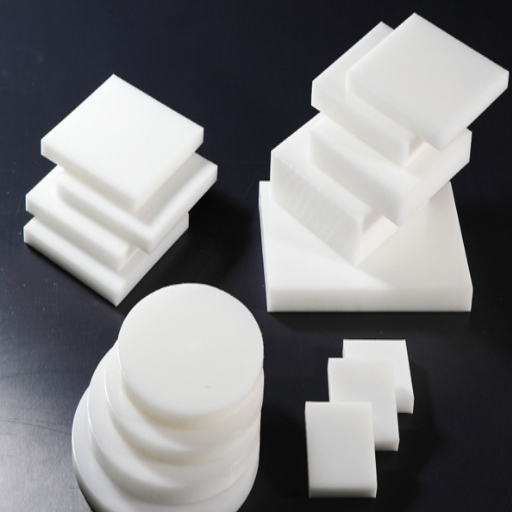
Material Selection Factors
The factors I consider when choosing between Delrin 100 and Delrin 150 are crucial because the selected material must fulfill the project’s requirements. The first to be considered are mechanical properties, as they indicate how a material behaves under specific conditions. Delrin 100 suits those applications requiring high strength and stiffness and is used for precision components under adverse loads. In contrast, Delrin 150 has slightly inferior mechanical properties but is preferred whenever machining and moderate strength levels are more critical. Therefore, it is suitable for mildly stressed working parts or prototype fabrication, where concerns about time and cost are paramount.
To me, environmental conditions largely determine which material will be recommended. Applications that involve exposure to heat, moisture, or chemicals would be best served with Delrin 100 because it is resilient to these factors. Due to its higher resistance to degradation under such conditions, this would provide reliable performance over an extended duration in harsh environments. For applications where exposure is not very high, I find Delrin 150 to be much more suitable due to its cost-performance balance.
Ultimately, I always strive to balance mechanical performance, environmental considerations, and project budget. When the performance of a material matches what an application truly needs, the training of the material will turn out to be most fruitful and efficient, both from the standpoint of production and application.
Cost-Effectiveness and Availability
Cost-effectiveness and the availability of materials are aspects I often focus on for economic reasons, as material sourcing time significantly impacts the project schedule. Such considerations include what excellent candidate material will be if the requirements call for Delrin 150. It is almost the best choice for Delrin 150 because of its worthy balance between price and performance when used in situations demanding moderate environmental resistance and durability. The relative cost-effectiveness promises solutions within the budget, which also works well when cost becomes a key barrier.
Availability matters just as much as cost: any delays in sourcing equipment would cause catastrophic consequences for project scheduling and efficiency. Delrin 150, however, enjoys wide availability from several suppliers, ensuring a steady supply and consequently reducing any bottlenecks to production. That kind of availability then turns towards cost-effectiveness given that competing markets tend to keep prices reasonably low.
Balancing the mentioned criteria of affordability, access, and performance enables me to manage project budgets and timelines effectively. Their application ensures that my projects conform to standards of quality and reliability, without unnecessary delays or cost inflation.
Environmental Impact and Sustainability
Considering the environmental impact of materials like Delrin 150 means putting great emphasis on how they qualify for sustainability. A petroleum-based Delrin 150 creates an issue with fossil fuel dependence for its production. Therefore, I would only buy from suppliers that have a proven track record of minimizing their carbon footprint through energy-efficient manufacturing processes and responsible sourcing.
The long service life of Delrin, combined with its further consideration of resistance to environmental degradation, adds more value to its sustainability profile. Because Delrin is highly resistant, those parts made from the material often do not require replacement very often, thereby contributing to waste reduction. I continue to explore options that support the recycling and upward recovery of Delrin products, as even minor improvements in waste management go a long way in helping to achieve sustainability.
In the long run, assessing the material’s performance against environmental parameters will help me establish a solid foundation for sustainability in my projects. The material is selected while considering both functional and economic requirements, along with researching ways to implement circular economy practices, such as recycling and reducing cartoon usage, as part of my broader commitment to environmental design.
Reference Sources
-
What Are the Grades of Delrin®/Acetal Available at EMCO Plastics
Discusses the properties of Delrin 150, including its low friction coefficient and high chemical resistance. -
Acetal (Delrin) CNC Machining
Highlights the impact resistance and low-friction characteristics of Delrin 150, making it ideal for engineering applications. -
Understanding Acetals – Professional Plastics
Provides a comparison of mechanical properties between Delrin 100 and 150. -
Acetal vs Delrin: What Are Their Differences
Explains the mechanical advantages of Delrin 150 over other acetal plastics. -
Comparison of Delrin® 100AF & Delrin® AF Blend
Details the blend properties of Delrin AF100 and Delrin 150, focusing on sliding and friction characteristics. - Top PC Plastic Pellets Suppliers in China
Frequently Asked Questions (FAQs)
What is Delrin, and how does it compare with other plastics?
Delrin, also known as acetal resin, is a thermoplastic that offers excellent dimensional stability and toughness. Accordingly, it finds use in a variety of applications, such as plastic parts, gears, and bushings. Compared to other plastics, Delrin has superior mechanical properties, including resistance to impact and wear. Due to its crystalline nature, it is robust and durable, making it suitable for high-end mechanical applications. The differences in the properties of Delrin 100 vs 150 can make one or the other better suited for specific applications.
What are the properties and applications of Delrin 100?
Delrin 100 is a homopolymer acetal, a type of acetal characterized by excellent machinability and low friction properties. It is always employed where the highest precision is necessary in the manufacture of plastic parts such as rollers and bushings. The agent is characterized by very high impact strength and low porosity, making it suitable for applications where high wear resistance is required. It is also utilized in the food processing industry, where self-lubrication qualities are of importance. This grade of Delrin has been thoroughly tested and certified to conform to all industry requirements.
What are some ways that Delrin 150 is different from 100?
Delrin 150 is a copolymer acetal, which renders it different mechanically from Delrin 100, a homopolymer. Both materials tend to be highly machinable; however, Delrin 150 exhibits better toughness and impact strength, which are often necessary in applications that demand some degree of flexibility. Delrin 150 has somewhat higher environmental resistance and can tolerate higher temperatures. The specific requirements of the application usually govern the choice between 100 and 150; determining factors include load-bearing versus thermal stability.
What are the target applications of Delrin plastic?
Being an excellent performing material, Delrin plastic finds a variety of applications. It is used in gears, bearings, and moving parts that require very low levels of friction and a highly extended wear life. Its high impact resistance makes it suitable for many industrial applications, and in food industries, it is beneficial since the material itself is self-lubricating. While machining and molding plastic, Delrin exhibits excellent dimensional stability, maintaining precise dimensions. Generally, Delrin can be relied upon for a wide range of mechanical and industrial applications.
Can Delrin be used for injection?
Yes, Delrin is an excellent injection-molding material due to its high flow rate and ability to flow evenly throughout a mold. Both grades of Delrin 100 and Delrin 150 can be used for injection molding, but the better grade to use depends on the desired mechanical properties. Furthermore, Delrin is renowned for molding intricate plastic parts due to its lower coefficients of friction and abrasion resistance. An injection molder would prefer a material for raising components that must withstand high impact and generally tolerate punishment.
What are the benefits of the Delrin AF?
Due to the PTFE fiber, these blends, specifically Delrin AF 100 and Delrin AF DE588, exhibit improved properties. The increased wear resistance and decreased friction make Delrin AF suitable for applications where sliding and bearing surfaces are crucial. PTFE added to the blend greatly enhances chemical resistance, thus widening its field of application. Overall, Delrin AF products combine the advantageous properties of traditional Delrin with the benefits of PTFE, making them suitable for more specialized applications.

